Harmonise Your Garden with Pieris Japonica ‘Temple Bells’
Check out our exciting collection of Pieris Temple Bells, so you can fully admire their white to soft pink bell-shaped flowers and lustrous leaves that grow red to dark green. Given their natural penchant to charm, Pieris japonica has the more impressive ability to attract insects, making them an asset in any flourishing garden.
How to Plant Pieris Japonica ‘Temple Bells’?
Planting Temple Bells is straightforward, and it adapts well to a variety of Australian climates. You can get started by keeping these essential things in mind:
- The best time to plant Pieris Japonica is in early spring or autumn when the weather is cooler. Milder weather allows for this beautiful shrub to better establish itself.
- It flourishes in well-drained, organically rich, acidic soil. To improve soil conditions, enrich with organic matter like compost or peat moss to improve its acidity and drainage prior to planting. Choosing the right soil is key to plants' healthy growing conditions.
- Pick a partially shaded spot. It can tolerate full sun but only in cooler climates. Choosing a space with protection from harsh winds is also essential.
- After planting, water diligently to help settle the soil around the roots. You can keep on watering on a regular basis but once established, you can reduce the frequency since the plant is moderately drought-tolerant, except during dry spells.
Why Should You Buy Pieris Japonica ‘Temple Bells’?
This medium-sized evergreen shrub is commonly used in mixed garden plantings, making it a garden enthusiast favourite. Here’s why the Pieris japonica planting is a worthy addition for your collection:
- They’re Low Maintenance: With the Pieris japonica, simply plant it in well-draining, acidic soil, preferably in a shaded or even just a partially shaded area. Fortunately, it’s a low-maintenance shrub that grows beautifully with minimal care, although it best thrives in cooler regions, from Sydney to Perth and areas south.
- They Attract Wildlife: They are known to provide nectar and pollen for bees and the many other types of pollinating insects, creating a thriving community of wildlife.
- They’re Resilient: This flowering plant can tolerate a range of climates despite its preference of cooler regions, just as long as you plant it in a partial shade. But with sufficient moisture, Pieris japonica can still tolerate full sun. They’re also deer-resistant, so that’s one less thing to worry about.
- The Elegant Look Is a Plus: Typically growing to a height of 1-2 metres, the Pieris temple bells plant adds a sense of grandeur to any garden or landscape with its fragrant white and pinkish flowers, surrounded by attractive glossy dark green leaves. It’s even more charming in early spring when the shrub’s bell-shaped flowers congregate so they sway in pendulous clusters, and in winter, its light pink buds bloom into white bell-shaped flowers.
How to Care for Pieris Temple Bells?
Caring for it is simple so gardeners can just take it easy when planting and growing Pieris temple bells. Here are essential steps to remember:
- Water deeply during dry spells but avoid overwhelming the soil with abundant water to avoid root rot.
- Fertilise in early spring with an acid-based fertiliser. Another option is to use slow-release organic compost for optimal growth and blooming. Don't overdo it, of course, as it can negatively impact flower production.
- When it comes to pruning plants, it's important to know what kind of pruning a certain plant needs. With Pieris temple bells, you only need light pruning to shape the plant and remove spent flowers.
- Apply a thick layer of mulch around the base of the plant to keep the roots cool, retain moisture, and stop weeds from sprouting.
- Protect the plant from extreme afternoon sun to eliminate the risk of leaf burn.
Things to Consider When Growing Pieris Temple Bells
While Pieris temple bells can grow in Australia, there are a few things to keep in mind to ensure it grows well. For instance, this plant prefers cooler climates, meaning it has a higher chance of growing and blooming in temperate regions.
If you live in areas with harsh summers, it's essential to protect the plant from extreme heat, especially in the afternoon. Failing to do so can result in leaf scorch. It's recommended to plant Temple Bells in an area with indirect light.
It's important to note that Pieris temple bells are toxic to humans and animals, so they should be planted with utmost care especially when there are kids and pets around.
Treating Your Pieris Temple Bells Plant For Signs of Diseases and Pests
To ensure optimal health and growth, treating plants for pests and diseases requires early detection. In the case of Pieris Temple Bells, though typically pest-resistant, it can occasionally be affected by lace bugs, particularly in dry or warm conditions. Aphids and scale insects are also common culprits. Monitoring the plant can help spot signs of damage, which can be remedied by an insecticidal soap.
Pieris temple bells can also suffer from common plant diseases like root rot due to overwatering or poor drainage. Fungicides can help turn things around, and of course, go easy on the waterings since it can lead to issues like fungal diseases. Pruning the affected parts also helps to prevent the damage from spreading further.
Where Can I Buy Pieris Japonica ‘Temple Bells’?
You can purchase Pieris temple bells right here at Local Botanist's online store. We offer a wide collection of indoor and outdoor plants that include the ever-grand to bring a new level of elegance to your garden space.
Companion Plants for Pieris Temple Bells
Considering its refined charm, resilience, and ability to attract wildlife, Pieris japonica is a great addition for your garden collection. To achieve a more flourishing outdoor space, you can also consider planting Pieris temple bells with the following selections:
- Rhododendron: Rhododendrons complement Pieris temple bells well because they thrive in similar conditions, such as having the same soil and light preferences.
- Camellia Japonica: The pairing between this classic flowering shrub and Pieris japonica will favour your garden with both plants producing the brightest of blooms.
- Azalea: Pretty much like Pieris temple bells, azaleas also flourish in acidic soil and partial shade. If you already have a shaded garden bed, azaleas would be a great addition.
- Hydrangea: With their huge, outlandish flowers, hydrangeas add a strong touch of colour that complements the understated sophistication of Pieris japonica.
| Weight | 3 kg |
|---|---|
| Pot Size | 200mm pot |
Detailed Information
| Typical height | 1.2-2.5 metres |
|---|---|
| Minimum temperatur tolerance | Can tolerate temperatures as low as -10°C |
| Climate | Prefers temperate regions, thrives in cooler climates |
| Light conditions | Partial shade to full shade protected from the afternoon sun |
| Growth habit | Upright, with cascading flower clusters and lush foliage |
| Growth conditions | Needs acidic, humus rich, well-drained soil (keep the soil consistently moist), moderate moisture, and cool, shaded environments |
Q: When is the best season to buy Pieris japonica in Australia?
The mild climate of certain regions like Victoria and Tasmania makes it possible to buy Pieris Japonica throughout most of the year. However, it’s best to purchase and plant Pieris temple bells in the autumn or spring, so it has enough time to grow and establish itself before summer or winter.
Q: What are the best Pieris japonica varieties for cooler climates?
Pieris japonica is ideal for cooler climates, but if you’re up for it, you can also explore other varieties like Pieris Japonica ‘Mountain Fire’ or ‘Valley Valentine,’ both of which thrive in similar conditions.
Q: What is the best way to prune Pieris japonica?
Pruning is typically done after the flowering season, around late spring to early summer. Light pruning will help maintain its shape and encourage new growth. Avoid heavy pruning as it may affect the following year’s blooms.
Q: How fast do Pieris Japonica ‘Temple Bells’ grow in temperate regions?
In temperate regions of Australia, Pieris Japonica ‘Temple Bells’ grows at a moderate pace. You can expect it to reach its full height of around 2 metres within 5-7 years, depending on the growing conditions.
Q: How big do Temple Bells Pieris get?
It grows from 1.2-2.5 metres, making it suitable for smaller gardens.
Q: Can I buy Pieris japonica in Brisbane?
Provided there’s adequate moisture, the Pieris temple bells plant will tolerate and thrive in sunny regions like Brisbane, which is also a testament to its resilience and versatility.
Ready to shop for new plants and enhance your garden’s lively charm? Order Pieris temple bells plant today and we’ll deliver it right to your doorstep. Check out our Plantastic Delivery section for more shipping information.
Temple Bells
Pieris Japonica
- In stock
- Delivery within 1-3 days based on location.
- Local pickup by appointment only
- Delivery Fees and Minimum Purchase
Pieris japonica easily catches attention with its bronze red colour leaves that eventually turn to dark green. Featuring delicate, cascading clusters of light pink flowers and thick foliage, the ‘Temple Bells’ are native to Japan, Taiwan, and Eastern China, but can also thrive in Australia, particularly in cooler regions.
Because of its unique beauty, it’s hard not to fall in love with this uniquely stunning shrub. Looking to add Pieris japonica to your thriving outdoor space? You can purchase this plant right here and we’ll deliver right away. Happy shopping!
Synonyms: Lily of the Valley Shrub, Japanese Andromeda, Japanese Pieris
Payment methods
Your payment information is processed securely. We do not store credit card details nor have access to your credit card information.


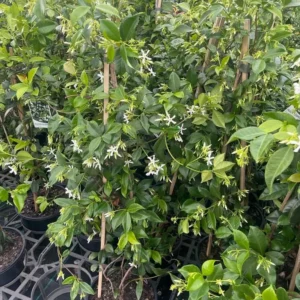
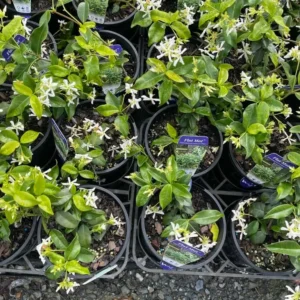
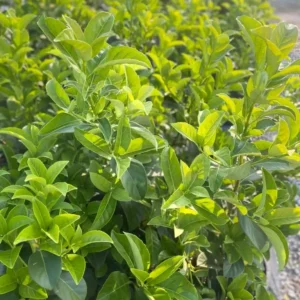
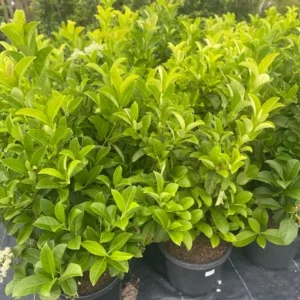
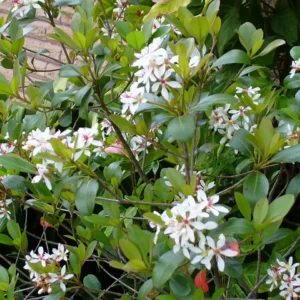

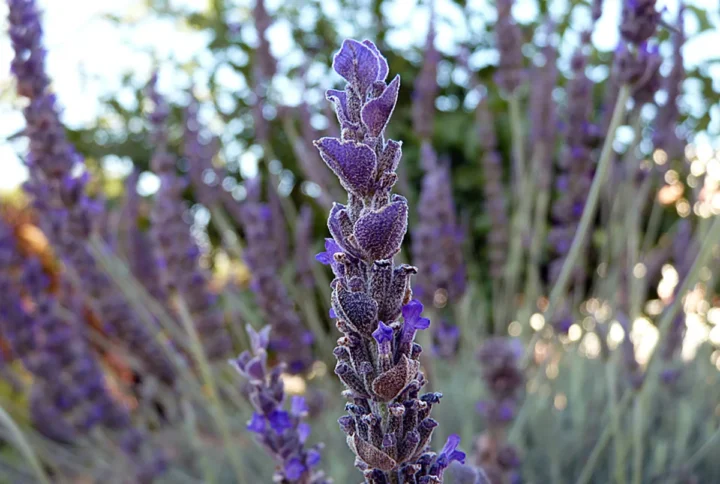

Reviews
There are no reviews yet.